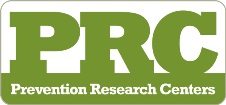Test your knowledge of stroke with these "true" or "false" questions ...
1. Symptoms or signs of stroke take a long time to appear.FALSE: Stroke symptoms are usually sudden and severe.
2. If you think someone is having a stroke you should call 911 immediately.
TRUE: Treatment is available for stroke, but it must be given within three hours of having symptoms. So it's important to get to the hospital quickly! Make sure to tell the 911 operator that you think someone is having a stroke.
3. Sudden confusion or trouble speaking or understanding is a sign of stroke.
TRUE: Call 911 or go to the emergency room if speech becomes slurred or mushy, or sudden confusion takes place.
4. Nothing can be done to reduce the risk for having a stroke.
FALSE: There are risk factors you can't control (age, family history, or having a previous stroke), but there are changes you can make to reduce your risk for stroke. Some of these include: controlling high blood pressure, diabetes, or high cholesterol; quitting smoking; being physically active, maintaining a healthy weight and eating a healthy diet.
5. Blurred vision or sudden trouble seeing out of one or both eyes is a sign of stroke.
TRUE: Yes, sudden trouble with vision may mean someone is having a stroke. Other signs to watch out for are:
- Sudden numbness or weakness of the face, arm or leg (especially on one side)
- Sudden trouble speaking or understanding, or sudden confusion
- Sudden trouble walking, dizziness, loss of balance or coordination
- Sudden, severe headache
This article was written by HHPC and approved by our Health Advisory Board.
